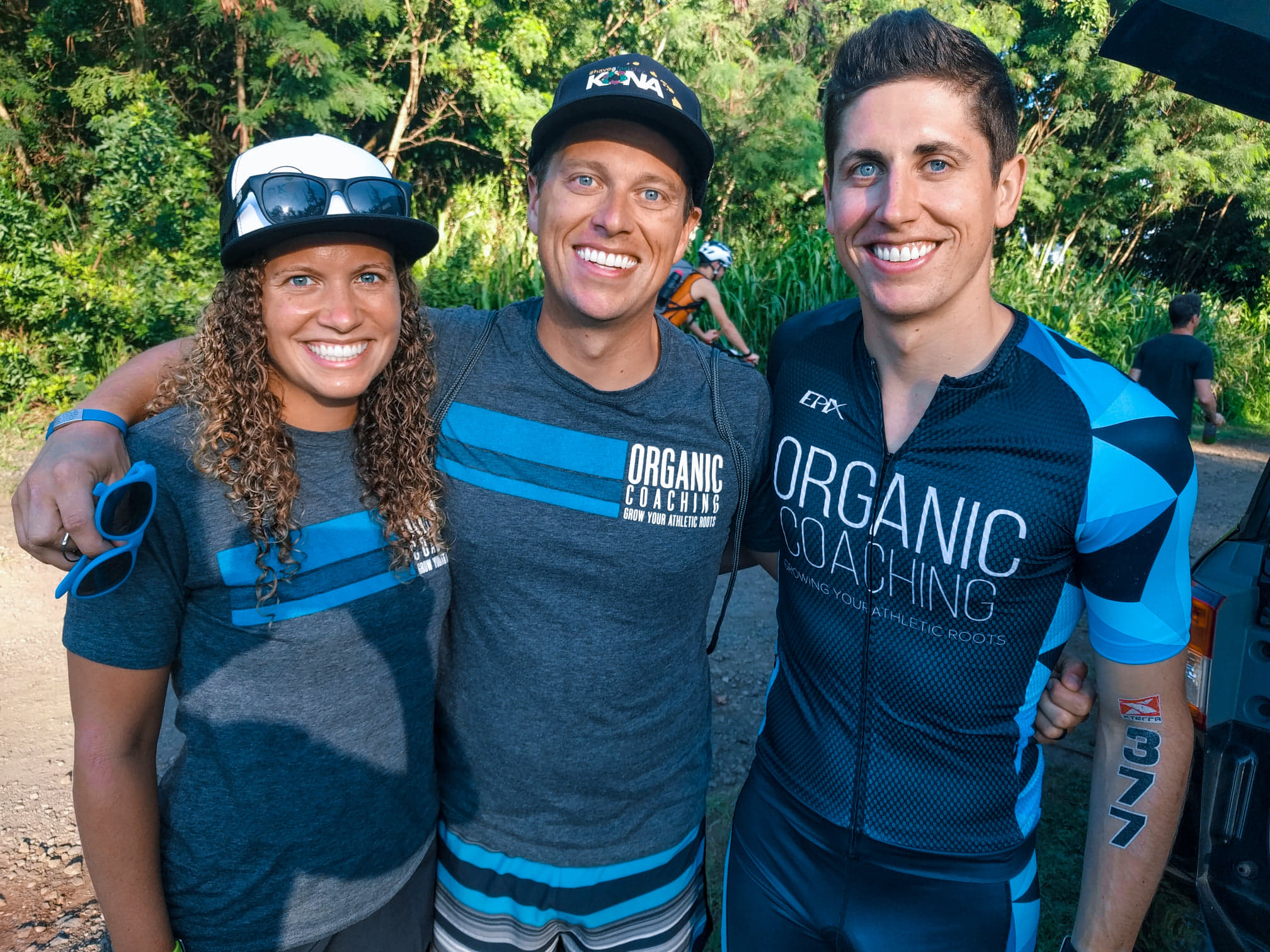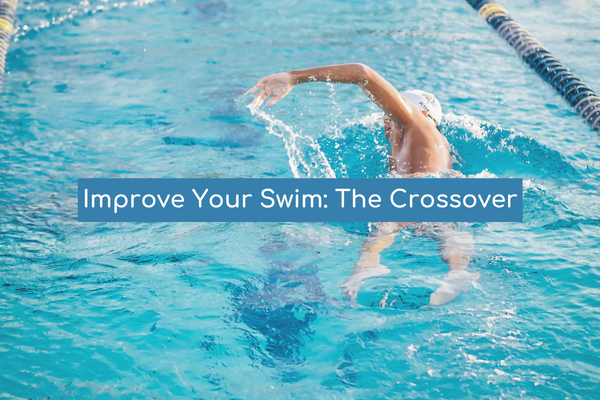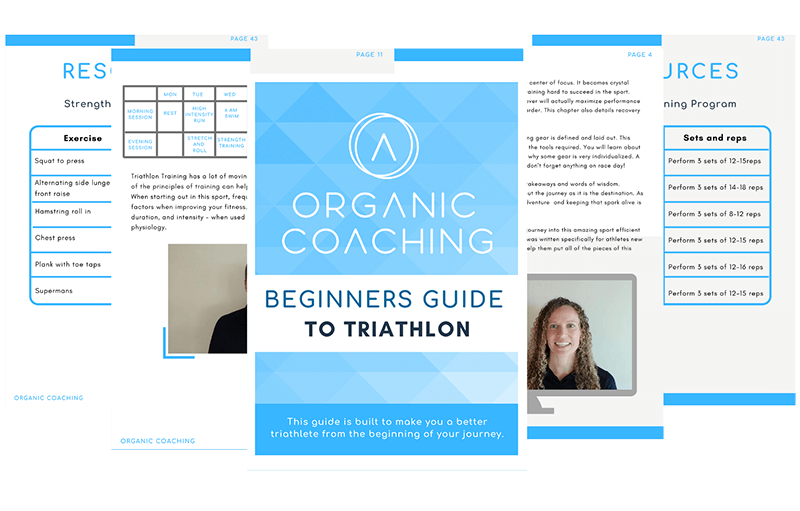

In this swim series, we’ve covered a wide range of ways to improve your form and stroke. This week we’re continuing with the “crossover.” In short, this is where your hand, wrist, and part of the lower arm extend across the center point of your head while extending forward as your hand enters the water. The crossover gets a lot of attention in the triathlon swimming world and for good reason. It’s a form deficiency that sets you off to a bad start and continues wreaking havoc as the stroke continues. I’ll explain later, but suffice it to say, it’s something we all want to avoid and the good news is it is very fixable.
The crossover causes all sorts of swim woes. As it relates to triathlon, the most obvious is it makes it very difficult to swim straight. In a pool, we have the convenience (crutch?) of the black line. This allows for self-correction, such that even if we do weave a bit, our brains and body make small adjustments to quickly straighten back out. But as we all know, once in the open water, no such aid exists.
If swimming straight was the only side effect of the crossover it would still be worth fixing. But unfortunately, it’s not, and if anything, the other impacts only get worse, affecting our balance and propulsion. The interconnectedness of the swim stroke is simultaneously impressive and infuriating. In, it’s amazing that we can coordinate so many small movements to progress forward. Yet one small flaw can lead to the whole system breaking down. The crossover exemplifies this. Our balance quickly falls off, our rotation is then exaggerated which likely leads to adjusting the lower body to compensate (aka massive scissor kick), our catch and pull engage weaker and more injury-prone muscles, and finally, the beginning of our next stroke is much more likely to further this imbalance. It’s all bad, but there is hope!
If you’ve investigated swim improvements, the crossover is something you’ve likely read about many times. Possibly even something you’ve already dedicated time to eliminating, but sadly it’s something that can and does return. As already mentioned, changes in our form (even positive ones) have downstream effects on other areas of our stroke. Most of the time it’s without you noticing. So, my suggestion here is to come in with an open mind, and if you find out it’s a non-issue, great! But it’s worth the small investment to make sure.
There are a few ways you can determine if you’re crossing over. The easiest is to have someone record you, or simply prop your phone up at the end of the lane and record yourself. It’s usually very obvious, so even the last few strokes of each length should be enough to see it. Alternatively, tilting your head up just slightly to watch yourself can work, but a video is an easy answer here. If either by recording or self-observation, you notice your hand entering the water past the center of your head, you’ve got some crossover work to do.
There are several drills to help address this problem, but these can often interrupt the flow of the stroke. First aim to consciously feel like you are reaching wider, as if in line with your shoulder. If you are crossing over, this will feel fairly odd. As if you’re splaying your arms very wide. But it’s more likely that this is just getting you to the center line. When initially correcting this, a snorkel can be an excellent tool to help isolate the breathing component of the stroke while letting you practice an entry that is at or to the side of the midline of your head. I’d caution against becoming too dependent on it. But it can provide just the assistance needed to begin rectifying the crossover.
With this type of form change, it’s going to be important to check in with yourself frequently as it can be easy to fall back into old habits. Taking a short glance up once or twice per lap to see where your entry is can be a helpful solidifier as you adopt this fix. But as mentioned above, and in previous articles, we don’t want our head position to be too high. So keep the glances to a minimum.
As you can see, there isn’t necessarily a major change needed for most. This small tweak of broadening the entry point is the crucial change, but repetition will be the key to mastery.
Continue taking more videos after a couple of swims to see if the change is locking in. Oftentimes, what we feel we’re doing is very different from what is happening. Keep practicing this and have it as a primary swim thought for 6 to 8 sessions to imprint the new technique into your muscle memory.
Finally, have patience with yourself. All swim form changes require time and focused attention. But it will be worth it. The crossover is one of the most common struggles we see and eliminating it will have a significant impact on your efficiency, propulsion, and balance in the water.
Happy swimming!
READ MORE: Improve your swim with head position


Carly and Tyler Guggemos built Organic Coaching in 2014 with a simple philosophy that works. The idea is to take what you have and grow it to get faster, fitter and stronger. And to do it with the time you have – not the time you wish you had.

For athletes who are ready to take their training to the next level while still thriving and succeeding in their professional and family life.
Copyright © 2024 Organic Coaching LLC